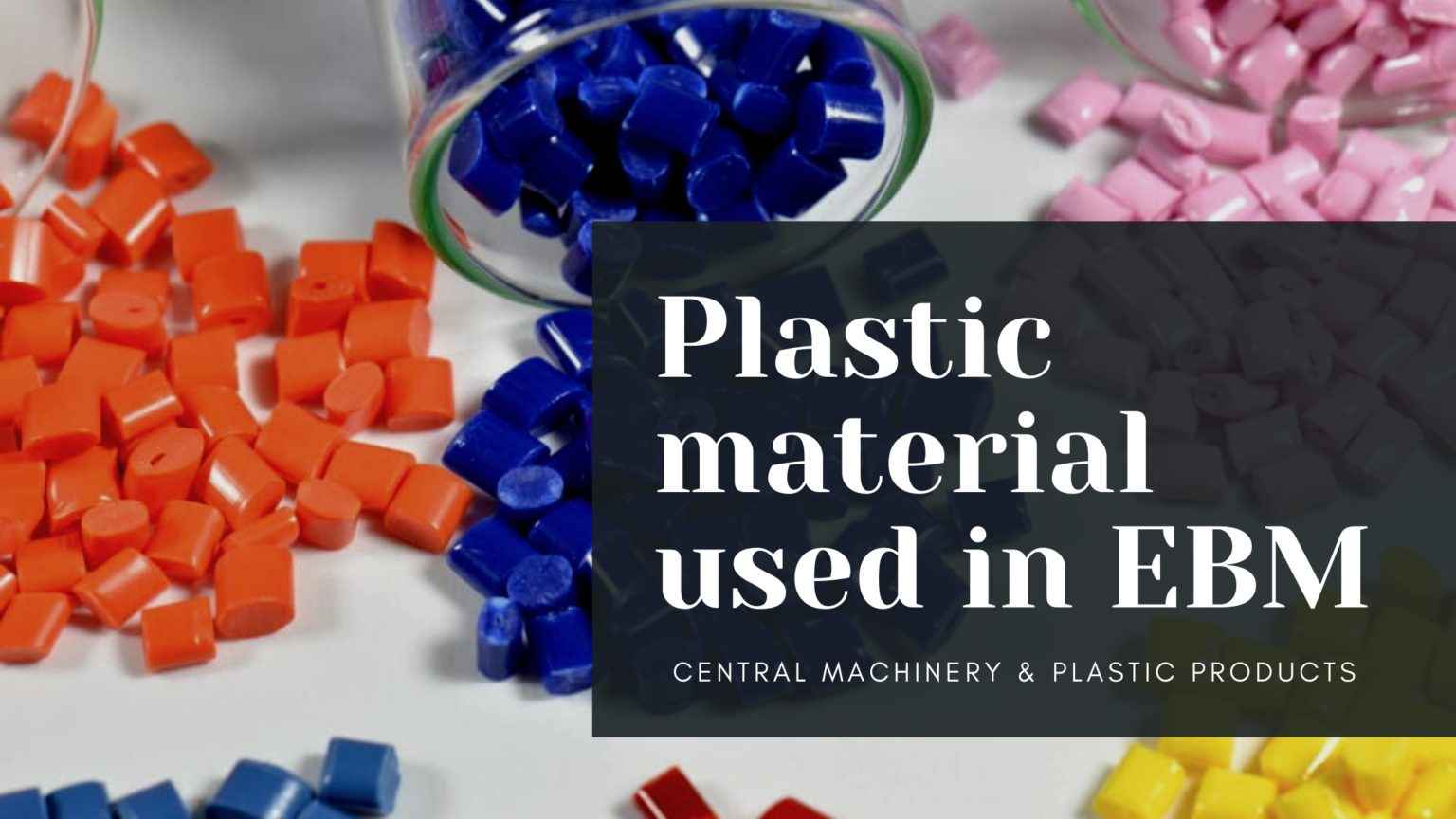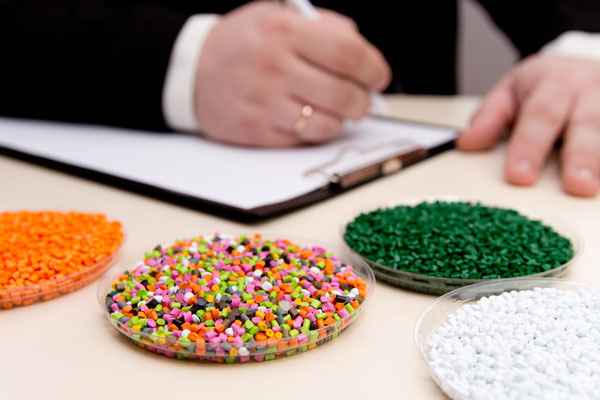Blogs
Types of material used in Extrusion Blow Moulding Machine
When choosing a material for blow moulding; cost, density, flexibility, strength, and other factors should be considered into what resin is best for your part. If the elastomeric properties of the material are exceeded, a hole will tear through the material resulting in a defective part. Other relevant properties are largely based on your application and might include mechanical, physical, chemical resistance, heat, electrical, flammability or UV resistance.
- Temperature exposure: What are the minimum and maximum temperatures the part will be exposed to? Remember, the first shot substrate must be able to withstand temperatures above the second shot’s melt point.
- Bending stiffness: Does the material need to be flexible or rigid? What should the bending strength or deflection be?
- Impact resistance: What level of hardness or surface toughness does each component require? Will the part need to withstand impact forces without shattering or breaking?
- Appearance: Does either component need to have a particular colour, grain, texture and/or gloss?
- UV resistance: Will the part be used in outdoor settings or otherwise exposed to UV rays?
- Chemical exposure: What chemicals –– e.g., gasoline, diesel fuel, antifreeze, etc. –– might this part be exposed to that could compromise function?
If a material meets most requirements but falls short somewhere, an additive may be able to change its properties.
Commodity Materials
Some of the least expensive materials are also the easiest to process. Polyethene (PE) and polypropylene (PP) are the most popular blow moulding resins. PE is currently less expensive but PP tends to be stiffer which sometimes offsets the cost difference. These materials are resistant to most chemicals.
One difference is temperature performance with PE performing better at -75 to +160 degrees F and PP performing well from -0 to +170 degrees F.
Engineering Resins
Many engineering-grade resins can be blow moulded. Some of the acronyms include PPO, PC, PETG, ABS, TPE – you get the idea. These resins require special consideration before moulding.
Most require drying before processing, specially designed extruder screws and specific processing conditions.
Here’s an introduction to the characteristics, benefits, and drawbacks of resins commonly used in blow moulding.
High-Density Polyethylene (HDPE)
HDPE is the world’s #1 plastic and the most commonly blow-moulded plastic material. It’s used in a vast array of products, including bottles for consumer liquids such as shampoo and motor oil, coolers, play structures, fuel tanks, industrial drums, and carrying cases. It’s moulder-friendly, translucent and easily coloured, and chemically inert (FDA approved and perhaps the safest of all plastics). PE is the most commonly recycled resin with recycling code designation 2.
Low-Density Polyethylene (LDPE)
Variations of LDPE include linear-low (LLDPE) and combinations with ethyl-vinyl-acetate (LDPE-EVA). LDPE is used for softer products that require a high level of stress crack resistance or flexibility. Generally, the higher the ethyl-vinyl-acetate (EVA) content, the softer the moulded part. Common applications include squeeze bottles, traffic channelizers, and boat fenders. The highest usage is blown film for plastic bags. It is also moulder-friendly, translucent and easily coloured, chemically inert, and commonly recycled under code 4.
Polypropylene (PP)
PP is the world’s #2 plastic — it’s an extremely popular injection moulding resin. PP is similar to HDPE, but slightly stiffer and lower density, which provides some advantages. PP is commonly used in elevated temperature applications, such as dishwasher tubes and medical parts that require autoclave sterilization. It’s moulder-friendly as well as translucent and easily coloured. Some clarified versions provide “contact clarity.” PP recycling is common under code 5.
Polyvinyl Chloride (PVC)
Although PVC is the world’s #3 plastic, it has been heavily scrutinized for using cadmium and lead as stabilizers, releasing hydrochloric (HCl) acids during processing, and releasing residual vinyl chloride monomers after moulding (most of these problems have been reduced). PVC is translucent and comes in rigid and soft forms — the soft resin is typically used in blow moulding. Common applications include soft medical parts, bellows, and traffic cones. Special processing equipment is recommended to prevent corrosion from HCl. PVC is recyclable under code 3.
Polyethylene Terephthalate (PET)
PET is a polyester that is usually injection blow moulded into clear containers. While it isn’t impossible to extrusion blow mould PET, it is less common, as the resin requires extensive drying. The largest PET blow moulding market is for soft drinks and water bottles. PET recycling rates are growing under recycle code 1.
Thermoplastic Elastomers (TPE)
TPEs are used to replace natural rubber in moulded parts. The material is opaque and can be coloured (typically black). TPEs are commonly used in automotive suspension covers and air intake ducts, bellows, and grip surfaces. It moulds well after drying and generally reprocesses well. However, recycling rates are somewhat limited under code 7 (other plastics).
Acrylonitrile Butadiene Styrene (ABS)
ABS is relatively hard plastic, used to injection mould football helmets. Blow moulding grade ABS is typically opaque and coloured for use in electronics housings and small appliances. ABS moulds well after drying. However, parts made from ABS aren’t as chemically resistant as PE or PP, so caution must be used with parts that come in contact with chemicals. Various grades can pass the Standard for Safety of Flammability of Plastic Materials for Parts in Devices and Appliances Testing (UL 94), Classification V-0. ABS is recyclable as code 7, but its toughness makes grinding difficult.
Polyphenylene Oxide (PPO)
PPO is an opaque resin. It requires drying and has a limited drawdown capacity during moulding. This restricts designers to PPO parts with generous blow ratios or flat shapes, such as panels and desktops. Moulded parts are stiff and relatively strong. Like ABS, PPO grades can pass UL 94 V-0 flammability criteria. It can be reprocessed, and a few recyclers accept it under code 7.
Nylon/Polyamides (PA)
Nylon melts quickly, so it’s more commonly used in injection moulding. The resins used for extrusion blow moulding are typically variants of nylon 6, nylon 4-6, nylon 6-6, and nylon 11.
Nylon is a reasonably priced translucent material that has decent chemical resistance and performs well in high heat environments. It’s often used to make tubes and reservoirs in automotive engine compartments. One special grade, nylon 46, withstands continuous temperatures up to 446°F. Some grades meet UL 94 V-2 flammability criteria. Nylon can be reprocessed, in certain circumstances, under recycled code 7.
Polycarbonate (PC)
The toughness of this clear, workhorse material makes it perfect for products ranging from eyeglasses to bullet-proof glass in jet cockpits. It’s also commonly used to make 5-gallon water bottles. PC must be dried before processing. It moulds well in basic shapes but requires serious evaluation for complex shapes. It’s also very difficult to grind but does reprocess under recycle code 7.
Polyester & Co-polyester
Polyester is often used in fibre. Unlike PET, modified polyesters like PETG (G = glycol) and co-polyester are clarified materials that can be extrusion blow moulded. Co-polyester is sometimes used as a substitute for polycarbonate (PC) in container products. It’s similar to PC, but it’s not quite as clear or as tough and it doesn’t contain bisphenol A (BPA), a substance that raises health concerns in some studies. Co-polyesters show some cosmetic degradation after reprocessing, so recycled materials have somewhat limited markets under code 7.
Urethane & Polyurethane
Urethanes provide performance properties that are popular in coatings like paint. Urethanes are generally more elastic than polyurethanes, which have to be specially formulated to become thermoplastic urethanes. The thermoplastic grades can be cast and extrusion or injection blow moulding. The material is most often used as one layer in multi-layer blow moulding. Ionomer versions can be used to impart gloss. Recycling is generally limited to in-house reprocessing under code 7.
Acrylic & Polystyrene
The clarity of these relatively low-cost resins leads customers to request them for applications such as lighting lenses. The material is normally vented during extrusion and tends to melt into a liquid state, which makes the success rate in extrusion blow moulding relatively low. Producers and compounders continue to work on processing improvements for extrusion grades with some success. The material can be recycled, usually for use in injection moulding, under code 6.

There is a wide array of raw materials that can be used for blow moulding. Blow moulding materials are commonly thermoplastics that do not easily degrade upon heating. Blow moulding is extensively used in the manufacture of plastic bottles which is why most raw materials have properties suitable for such application. Currently, blow moulding is gaining momentum in the transportation, construction, and consumer goods industries. This makes engineering plastics such as polyamides and polycarbonates viable to be blown moulded as well.



